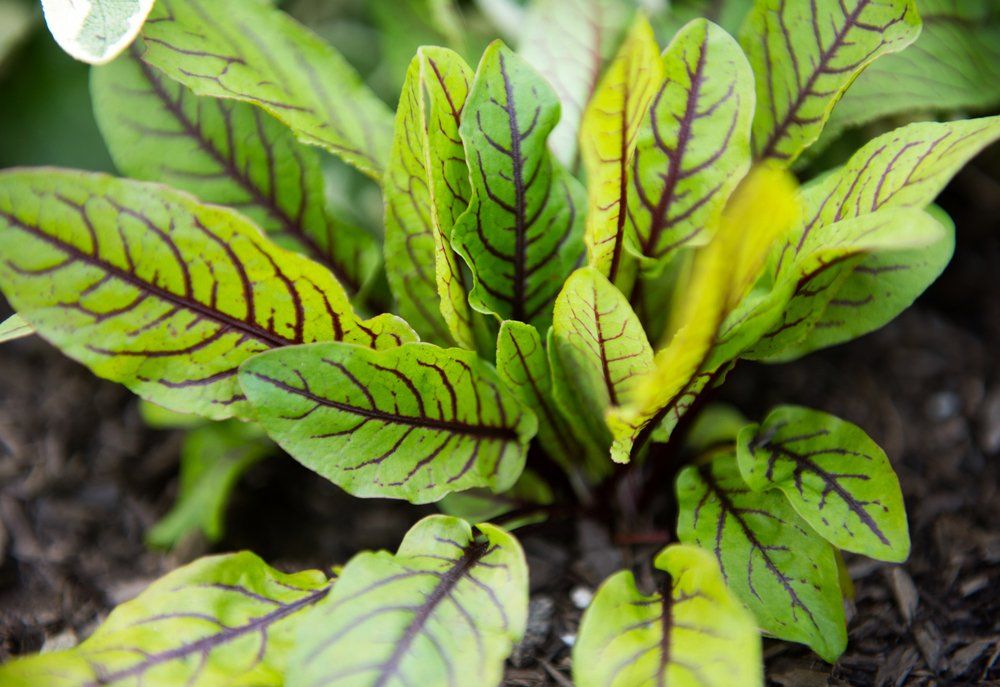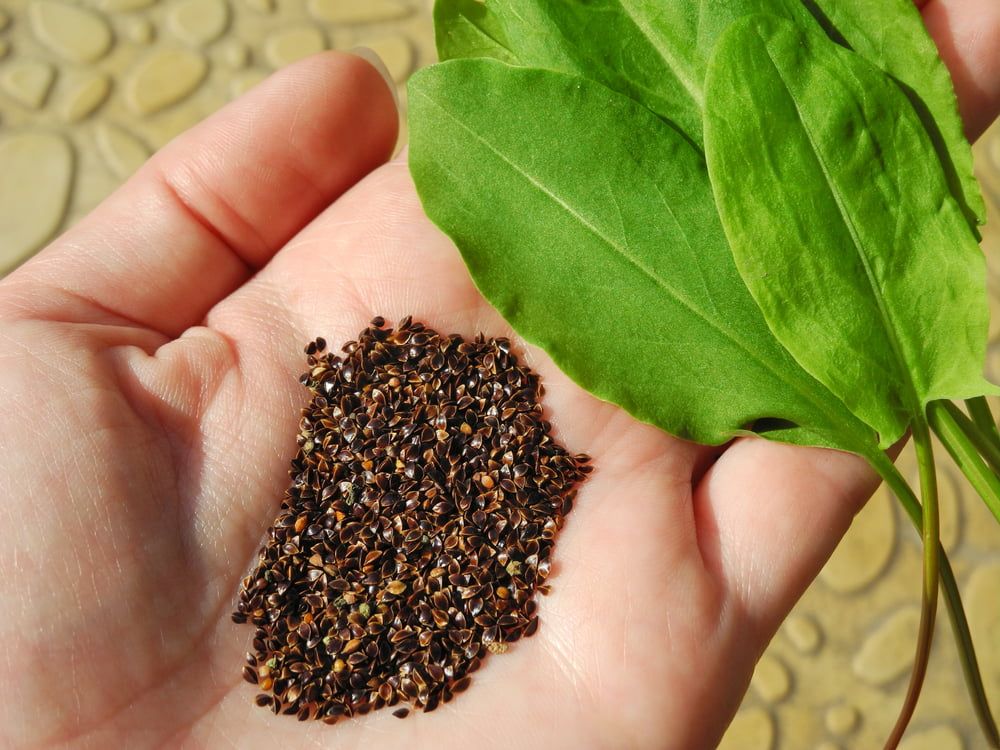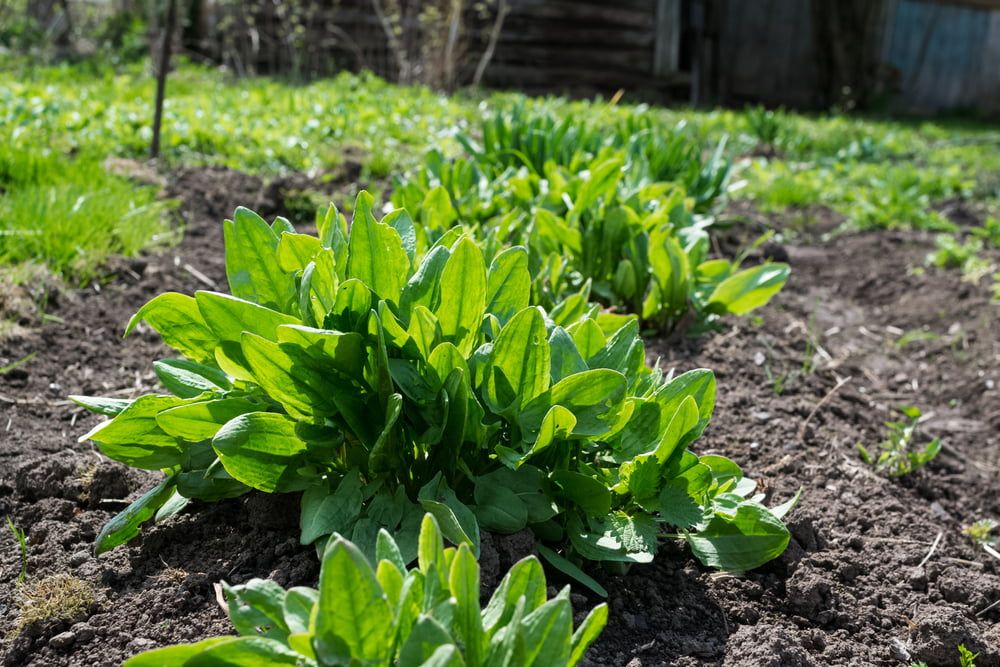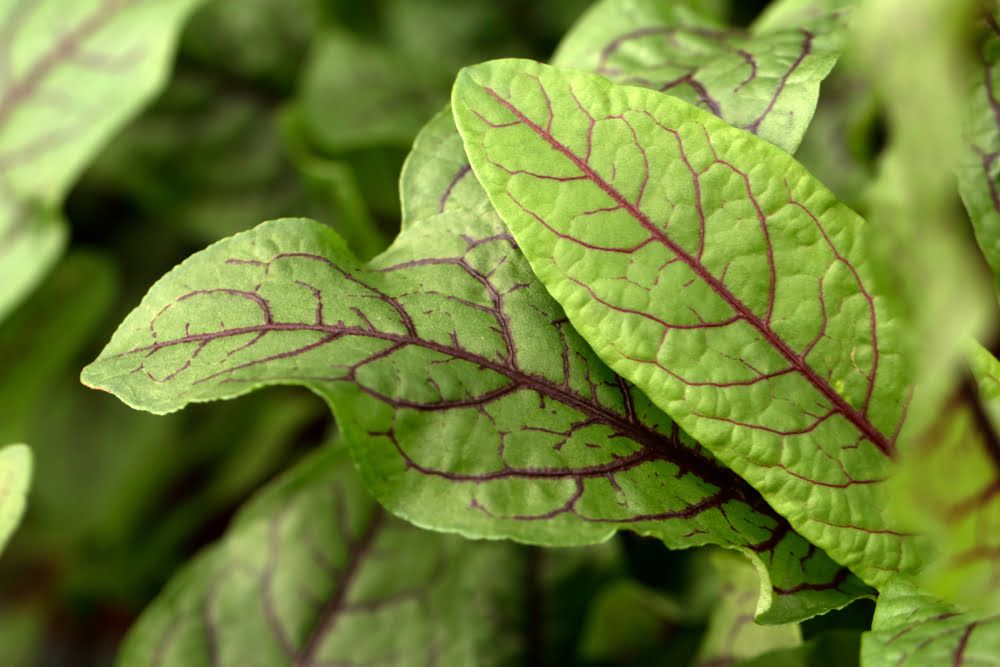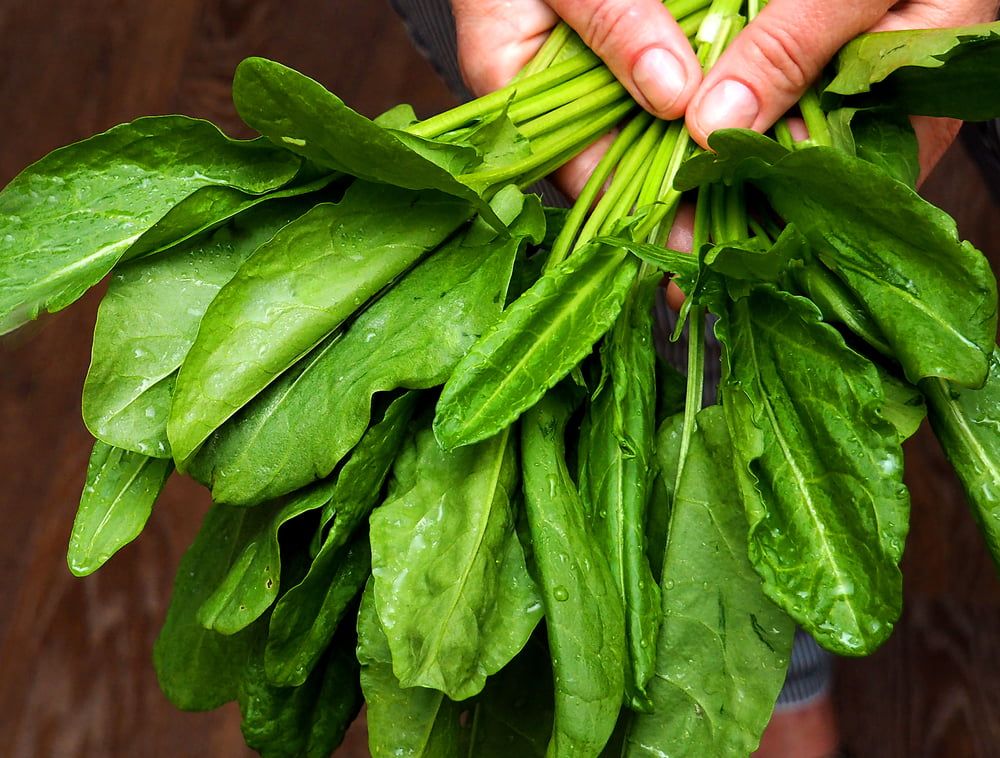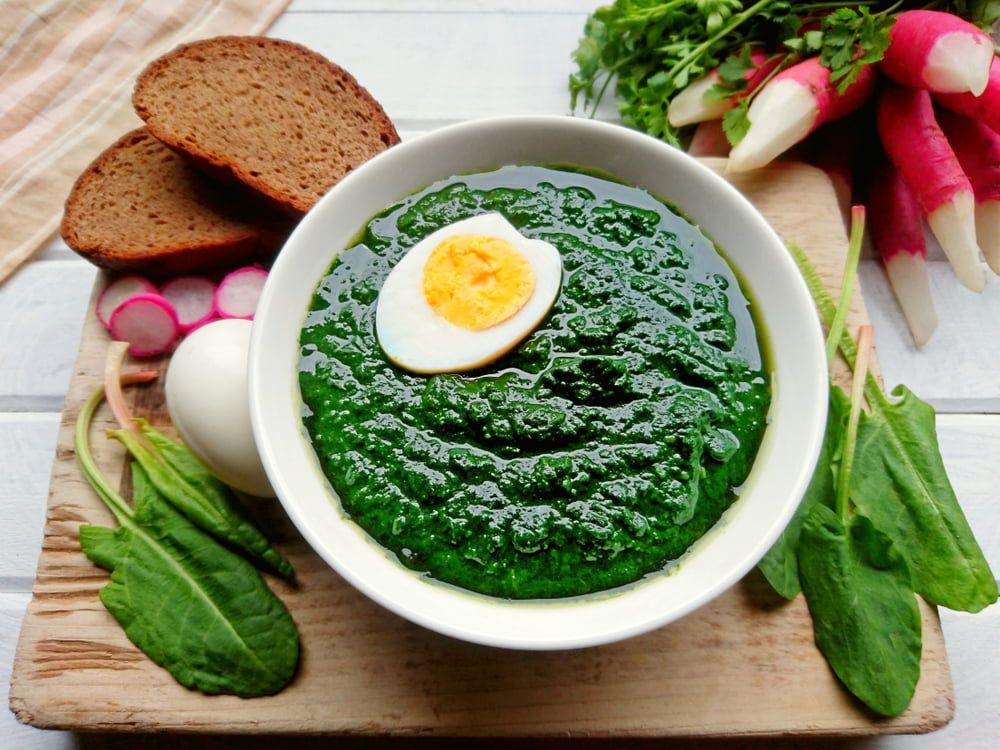
Although the tangy and citrusy flavour of sorrel leaves hold so much culinary potential, sorrel isn’t an ingredient that’s often sold in supermarkets. While this may mean that many miss out on its unique taste, you don’t have to – sorrel is such an easy plant to grow at home, providing plenty of fresh leaves for harvesting throughout the spring and summer.
Growing Sorrel: A Quick Snapshot
When to Sow – Mar-Jun
When to Plant – May-Aug
When to Harvest – Mar-Oct
Average Yield per Plant – 0.3kg/year
Spacing – 30cm
Depth – 1cm
How to Grow Sorrel at Home
Sorrel is extremely easy to grow. Being a perennial, you’ll only need to plant sorrel once for it to return bigger and better each year. That being said, many find that older plants take on quite a tough texture, which is why sorrel is often grown as an annual too.
If you’re planning on using your sorrel as a herb, then one or two plants is all that your garden needs. However, if you want to make the most of its zesty zing and use it throughout the spring and summer as a main salad ingredient and as a spinach replacement, aim to grow three to four sorrel plants per person.
Growing Requirements for Sorrel
Sorrel does best in areas that receive full sun, although it will grow quite happily in partial shade too.
Sorrel is also extremely cold hardy, making it the perfect edible perennial. It will tolerate winters as cold as -30°C, but will bolt once the temperatures soar in the summer.
In terms of soil, sorrel prefers a rich and slightly acidic mix. Adding plenty of organic matter to your growing area will help to encourage healthy leaf growth.
How to Grow Sorrel from Seed
While sorrel seeds can be direct sown outside two weeks before your last spring frost, starting them indoors usually gives you healthier plants. It also means that you’ll be able to start your seeds earlier and give your plants a head start on the growing season, which then gives you an earlier harvest!
How to Sow Sorrel Seeds in Modules:
- Fill small pots or module trays with a multi-purpose compost
- Water well. Make sure that excess water is freely draining from your containers
- Make an indentation in each module, about 1cm deep
- Sow 1 or 2 seeds per module. Sowing extra gives you insurance in case one doesn’t germinate, but the extra seedling will need to be thinned out after it’s about a week old. However, sorrel usually germinates well, so double sowing your seeds isn’t strictly necessary
- Cover your seeds back over and lightly water them
Sorrel germinates best at temperatures between 10-24°C, with germination taking anywhere between one to three weeks.
You’ll need to wait until your spring frosts are over before planting your sorrel outside. If your seedlings start to outgrow their modules, transplant them into a larger container. A 5cm pot should be sufficient to keep them happy until they’re ready to move out.
How to Direct Sow Sorrel Seeds:
- Prepare your growing area, making sure that it’s weed-free and that the soil on the surface is light and fine
- Sow your seeds thinly, just below the surface of the soil
- Water lightly
Once your seeds germinate, thin them out so that there is 30cm between each plant. Although sorrel doesn’t grow too tall, it has a spread of about 60cm. Over-crowding will lead to stunted growth and the development of diseases, so pay attention to spacing.
If you plan on growing your sorrel as an annual, then direct and successional sowing is the least labour-intensive method of ensuring a regular harvest.
How to Plant Sorrel Outside
Once you’ve had your last spring frost, your indoor-sown sorrel seedlings can be planted out.
Before doing this, harden them off for a week or so. This will help them to acclimatise to their new growing area, which prevents transplant shock and gives you healthier plants.
Once you’re ready to get planting, weed your growing area. Then, dig holes that are large enough to accommodate each sorrel plant, along with the soil that it’s currently growing in.
Place your plants into their new homes and cover them back over with soil. Then, use your hands to gently firm the soil down around them, before watering well.
How to Plant Sorrel in a Greenhouse
Although sorrel can be successfully grown in a greenhouse, it is ultimately a cool-weather crop, meaning that your planting and harvesting times will be different than when growing it outdoors.
Sorrel grown in a greenhouse will give you leaves to harvest earlier in the year, but the plants will bolt much sooner in the summer. The flowers that shoot up need to be removed – sorrel already has a reputation for being a prolific self-seeder, and this happens even more in a greenhouse. Leave the flowers on and your sorrel will soon take over all of your greenhouse beds, becoming more of a weed than a useful plant.
The steps for planting sorrel in a greenhouse are the same as when planting outside.
However, it would also be worth considering growing your sorrel in a container. This means that you will be able to move it outdoors once the temperatures rise, which will help to extend your growing period. If you decide to do this, go with a container that’s around 20-30cm in both depth and diameter.
Alternatively, grow a few plants outdoors and then have a couple of extras in your greenhouse for the longest harvesting period.
How to Care for Sorrel
Once your sorrel plants are established, they won’t need much in terms of care, especially if you’re regularly harvesting them. However, if you want your plants to truly thrive, here’s what you need to do:
Watering Sorrel
Sorrel does best when kept well-watered. If the soil runs too dry, your plants will likely bolt early, which turns the leaves tough and bitter.
Try to give your plants between 2-3cm of water a week. Rainfall will often provide this, but, if you’re going through a dry spell, manual watering will be needed.
Feeding Sorrel
If your sorrel is growing in good soil, then it won’t need to be fed.
However, applying a high-nitrogen fertiliser, such as chicken manure pellets, twice a year can help to encourage more leafy growth.
Mulching Sorrel
Mulches are usually applied around plants to help suppress weeds while maintaining consistent moisture levels.
When it comes to sorrel, all of that still applies, but a mulch has the added benefit of keeping the leaves clean. The majority of your harvest will consist of young leaves, which grow quite low to the ground. These can end up damaged or splattered with dirt during heavy rains, both of which a mulch prevents.
Pinching Off Sorrel Flowers
Warm summer temperatures will cause your sorrel plants to bolt. This means that they’ll send up flower stalks, which turn into flowers and then seeds.
Unless you’re trying to save seed to sow next year, the flower stalks should be removed as soon as you notice them. This will help to prolong your growing season, as the plants will be able to continue putting all of their energy into their leaves, rather than into producing seeds.
In case you were wondering – yes, sorrel flowers are edible and taste very similar to the leaves themselves.
How to Harvest Sorrel
Sorrel doesn’t take long to mature. Most plants are ready for harvesting just two to three months after the seeds were sown.
Sorrel leaves taste best when they’re young, so try harvesting them when they’re about 10-12 cm in height.
Simply use your fingers to pluck off your chosen leaves at the base of the plant. Be gentle with the leaves to prevent any bruising.
How to Store Sorrel
Sorrel is best used fresh. Its flavour and texture begin to decline as soon as the leaves have been picked.
While you can wrap the leaves in a damp paper towel and store them in a perforated plastic bag in the fridge for a few days, they won’t taste anywhere near as good as freshly-picked leaves.
If you do end up with a large number of leaves at the end of the growing season and you don’t want them to go to waste, then freezing them would be your best storage option, since sorrel doesn’t retain its flavour well when dried.
Sorrel will keep in the freezer for several months. There are two main methods to doing this:
- Slicing the leaves up into strips and freezing in a single layer, before placing them into a bag
- Pureeing the sorrel, possibly with other herbs too, and then freezing the puree
How to Prepare & Cook Sorrel
Sorrel doesn’t need much preparation. Simply give the leaves a wash under running water, using your fingers to dislodge any stubborn bits of dirt, and they’re ready to be used.
The sour, lemony flavour of sorrel is quite strong. For this reason, many tend to use it as an accent in dishes, rather than as a main ingredient. However, so long as you treat it right, sorrel can be showcased in so many ways. Here are a few ideas:
- Creamed sorrel
- Sorrel salads
- Sorrel soup
- Sorrel and leek quiche
- Sorrel pesto
Is Sorrel Toxic?
Sorrel contains very high amounts of oxalic acid. This is a natural compound that’s also found in other leafy greens, such as spinach and kale, and is what gives the leaves their signature sourness.
This isn’t something to worry about, unless you suffer from inflammatory bowel disease or are prone to kidney stones. Even then, the younger leaves have a much lower oxalic acid content than older leaves, so can still be safe in moderation. Speak to your doctor if you have any concerns.
Common Sorrel Problems
Sorrel is generally quite a resilient plant that isn’t usually bothered by pests and diseases. Aphids and slugs will likely be your main issues, but there are plenty of organic methods out there to control both of these.
Popular Sorrel Varieties to Grow:
- French sorrel – also known as Buckler’s sorrel, French sorrel is very low-growing and has a beautiful citrus flavour
- Red-veined sorrel – the vivid red veining that marks these lush green leaves make this variety highly ornamental, in addition to being edible. The leaves also have quite a mild flavour
- Garden sorrel – has a good flavour and grows prolifically. However, its flower shoots are taller than other varieties, meaning that the plant’s self-seeding habit could become a nuisance
Conclusion
Not only is sorrel such a tasty yet unique ingredient, but it’s also packed with high amounts of vitamins A and C, along with an impressive list of other nutrients. Being an easy perennial to grow and care for, sorrel really does tick all of the boxes when it comes to useful edible plants to have in the garden.
